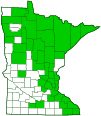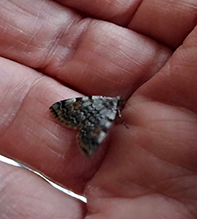American idia moth
(Idia americalis)
Conservation • Description • Habitat • Ecology • Distribution • Taxonomy
|
|
||||||||||||||||||
Description |
American idia moth is a common, medium-sized, litter moth. It occurs in the United States and southern Canada east of the Great Plains, west of the Rocky Mountains, and in central Colorado and New Mexico. It is common in the wooded regions of Minnesota. Caterpillars feed on lichens, dead leaves, and fungi, and possibly also on the detritus in ant nests. Adults are found from late May to early October in moist woodlands. They often feed on lichens on the trunks of trees. Adults are roughly triangular in shape (deltoid), are ½″ to 9⁄16″ (13 to 14 mm) in length, and have a ¾″ to 1 3⁄16″ (20 to 30 mm) wingspan. Moth size is often given in terms of forewing length, which in this case is ⅜″ to 9⁄16″ (9 to 14 mm) The forewings are broadly rounded on the outer margin. They are gray or light brown in the basal half, becoming darker and tinged with brown, brownish-orange, brownish-red, or brownish-yellow on the outer half, and they are crossed with several pale jagged lines. From the wing base to the tip there is a basal line, an antemedial (AM) line, a median line, a postmedial (PM) line, a subterminal (ST) line, and a terminal line. The AM line is pale and is bordered below with dark brown. The median line is dark brown. The PM and ST lines are pale and are bordered inside with dark brown. There is a dark brown bar on the leading edge (costal margin) at the ends of the AM, PM, and ST lines. This feature readily distinguishes American idia moth from all other idia moths. The terminal line is dark brown and thin on the inner half, becoming a broader patch on the outer half. The fringe is checkered. The round spot (orbicular spot) in upper median area is small and is colored the same as the tinge on the rear half of the wing. The kidney-shaped spot (reniform spot) in the rear half of the median area is the tinge color but darker and with a pale border. The hindwing is light gray with several dark and light lines. The head and thorax are the same color as the forewings. The antennae on both sexes are slender and thread-like. On the male they are moderately covered with long bristles on both sides (biciliate). The caterpillar is less than ¾″ (2 cm) long. The body is dark smoky brown and has several rows of orangish, bristle-like hairs (setae). The setae are pale at the tip. The caterpillars of most idia moths can be identified only by rearing them into adults. |
Size |
Total length: ½″ to 9⁄16″ (13 to 14 mm) Wingspan: ¾″ to 1 3⁄16″ (20 to 30 mm) Forewing length: ⅜″ to 9⁄16″ (9 to 14 mm) |
Similar Species |
Habitat |
Moist forests and woodlands |
Ecology |
Season |
Two or more generations per year: May to October |
Behavior |
Adults are active at night and will come to lights. |
Life Cycle |
|
Larva Food |
Lichens, dead leaves, fungi, and possibly detritus in ant nests |
Adult Food |
Lichens |
Distribution |
||
|
Sources Biodiversity occurrence data published by: Minnesota Biodiversity Atlas (accessed through the Minnesota Biodiversity Atlas Portal, bellatlas.umn.edu, 4/12/2023). |
|
| 4/12/2023 | ||
Occurrence |
||
Common |
||
Taxonomy |
|
Order |
|
Superfamily |
Noctuoidea (Owlet Moths and Allies) |
Family |
Erebidae (Underwing, Tiger, Tussock, and Allied Moths) |
Subfamily |
Herminiinae (litter moths) |
Genus |
Idia |
Until recently, the subfamily Herminiinae was treated either as the separate family Herminiidae or as a subfamily of Noctuidae. A molecular phylogenetic analysis of the family Erebidae (Zahiri, Reza; et al., 2011) determined that Herminiinae are closely related to Aganainae, which is a subfamily of Erebidae, and Herminiinae was moved as a whole to Erebidae. |
|
Subordinate Taxa |
|
|
|
Synonyms |
|
Helia americalis Idia pulverosa Idia scriptipennis |
|
Common Names |
|
American idia American idia moth |
|
Glossary
Costal margin
The leading edge of the forewing of insects.
Orbicular spot
A circular spot or outline in the upper median area near the antemedial line on the forewing of many moths.
Reniform spot
A kidney-shaped spot or outline in the lower median area near the PM line on the forewing of many moths.
Seta
A stiff, hair-like process on the outer surface of an organism. In Lepidoptera: A usually rigid bristle- or hair-like outgrowth used to sense touch. In mosses: The stalk supporting a spore-bearing capsule and supplying it with nutrients. Plural: setae. Adjective: setose.
Visitor Photos |
||
Share your photo of this insect. |
||
This button not working for you? |
||
Luciearl |
||
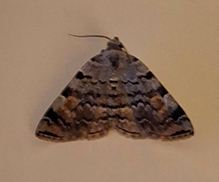 |
||
Released outside Found on the wall this morning. I bring geraniums in for the winter and I believe that's where it spent the winter. Same thing last year. |
||
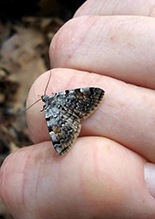 |
||
Found this moth on my sliding glass door today. I had just watered my geraniums, so maybe came from them. |
||
Alfredo Colon |
||
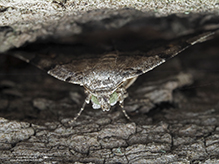 |
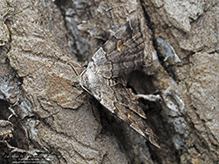 |
|
Babette Kis |
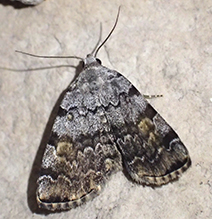 |
Idia americalis (American idia moth) |
MinnesotaSeasons.com Photos |
||
|
||
|
||

Slideshows |
|

Visitor Videos |
||
Share your video of this insect. |
||
This button not working for you? |
||
|
Other Videos |
||
American Idia (Erebidae: Idia americalis) Dorsal view |
About
Sep 5, 2011 Photographed at the Turtle River State Park, North Dakota (05 September 2011). Thank you to Maury Heiman (@Bugguide.net) for identifying this specimen! |
American Idia Moth resting for the night |
About
Aug 11, 2022 |

Visitor Sightings |
||
Report a sighting of this insect. |
||
This button not working for you? |
||
Luciearl |
Location: Lake Shore Found on the wall this morning. I bring geraniums in for the winter and I believe that's where it spent the winter. Same thing last year. |
 |
Luciearl |
Location: Lake Shore Found this moth on my sliding glass door today. I had just watered my geraniums, so maybe came from them. |
 |
| Alfredo Colon 8/22/2022 |
Location: Albany, NY |
| Babette Kis 8/5/2021 |
Location: Barnes Prairie house next to, Racine Co., WI |
MinnesotaSeasons.com Sightings |
||
|

Created: 4/12/2023 Last Updated: © MinnesotaSeasons.com. All rights reserved. |
